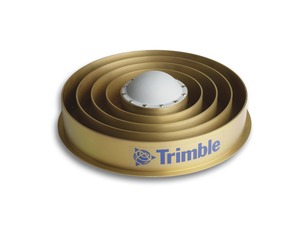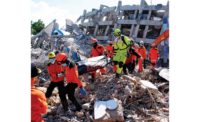
Shipboard researchers from the University of Hawaii whose instruments unintentionally recorded the passing of a tsunami propose that commercial ships be equipped with similar devices to create an ad-hoc tsunami detection network at a fraction of the cost of deep sea buoys.
The scientists were returning from Guam, where they had been measuring sea elevation in February 2010, when their precision GPS picked up a long-wavelength, open-water tsunami generated by an 8.8 magnitude earthquake in Chile. At sea the tsunami amplitude was 9.4 cm and would have been difficult to discern.
The vessel had two Trimble Zephyr antennas feeding receivers upgraded with dual-frequency GPS. "In the next stage to see if this is feasible we'd use Trimble Ti GNSS Choke Ring Antennas to improve multipath mitigation and increase accuracy even more," says James Foster, an assistant researcher with the University of Hawaii's School of Ocean and Earth Sciences and Technology.
The current warning system is the National Oceanographic and Atmospheric Administration's Deep Ocean Assessment & Reporting of Tsunamis (DART) program. It has 39 buoys anchored in the Pacific Rim as well as the Atlantic and Indian oceans. Each buoy costs about $750,000 with annual system maintenance of $28 million, according to the U.S. General Accountability Office.
Foster and his colleagues wrote a paper in the journal Geophysical Research Letters in May proposing the ship-based system. "At $15,000 per unit, you could equip 50 ships with GPS for the cost of one buoy," Foster observes.
"It's an intriguing concept, similar to the Voluntary Observing Ship program that reports on weather observations worldwide," says Stephen Cucullu, program manager with the National Data Buoy Center. "It will be interesting to watch its development."
"We're pretty confident in the equipment," says Foster. "If ships off Indonesia were equipped with this in 2004, the tsunami that devastated the area could have been detected much earlier and residents warned much sooner."


Post a comment to this article
Report Abusive Comment